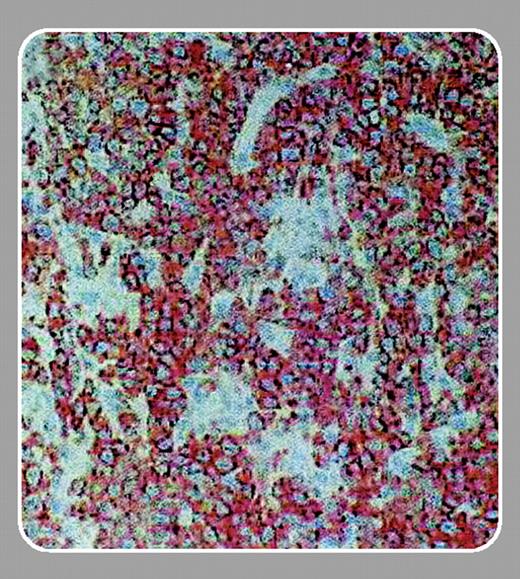Lymphomatoid papulosis (LyP) is a cutaneous clonal T-cell lymphoproliferative disorder that manifests as papulonodular lesions that regress spontaneously, only to reappear at the same or other sites. Despite the usual benign clinical course, 10% to 20% of LyP patients develop a systemic malignant lymphoma, usually mycosis fungoides, Hodgkin lymphoma, or anaplastic large-cell lymphoma. In most cases analyzed, the malignant lymphoma is clonally related to the regressing LyP lesions.1 Although the malignant lymphoma usually follows LyP, the lymphoma may occur simultaneously or precede LyP in 10% of cases.2 These observations raise the following questions: (1) Why do LyP patients have a high frequency of lymphomas? (2) Why do these lymphomas develop prior to clinical evidence of LyP? (3) Why does LyP persist when the systemic lymphoma is in clinical remission? The study of Gniadecki and colleagues (page 3797) provides important clues to answer these questions. They found that bone marrow from 2 patients who developed lymphoma prior to LyP harbored cells with the unique monoclonal T-cell receptor (TCR) gene rearrangements that characterized the subsequent LyP cells. Their observation is consistent with our hypothesis that a genetic event in an early lymphocyte precursor can explain the clonal relationship between LyP and the lymphomas that LyP patients develop.3 Gniadecki et al also propose a genetic defect in a multipotent hematopoietic progenitor as a possible explanation for the high frequency of lymphoid and nonlymphoid malignancies in LyP patients. Accordingly, we detected genetic instability as an early event in LyP and mycosis fungoides (A. Ruebben et al, manuscript submitted).
The frequent recurrence of LyP in the skin may be explained by our recent finding that LyP cells display on their surface cutaneous lymphocyte antigen (CLA), an adhesion molecule that mediates initial tethering of T lymphocytes to the endothelium of cutaneous postcapillary venules, thus causing LyP cells to home to the skin.4 FIG1
It is intriguing that LyP precursor cells in the bone marrow could not be recognized morphologically. Further studies are needed to determine the phenotypic characteristics of these precursor cells. Do they display CLA, the lymphocyte activation antigen CD30, or cytotoxic proteins T-cell intracellular antigen-1 (TIA-1) and granzyme B that characterize LyP cells in the skin?5 Although the study of Gniadecki et al focuses on LyP, the authors suggest that this model may apply to other types of peripheral T-cell lymphoma. Indeed, bone marrow and cutaneous involvement are frequent in peripheral T-cell lymphomas, unspecified; angioimmunoblastic T-cell lymphoma; and anaplastic large-cell lymphoma, as revealed by immunohistochemical stains for CD30, epithelial membrane antigen (EMA), and anaplastic lymphoma kinase (ALK).6 The findings of Gniadecki et al suggest that it may be useful to apply immunohistochemical stains and molecular analysis of TCR genes to evaluate the histologically uninvolved bone marrow of patients with peripheral T-cell lymphomas.


This feature is available to Subscribers Only
Sign In or Create an Account Close Modal